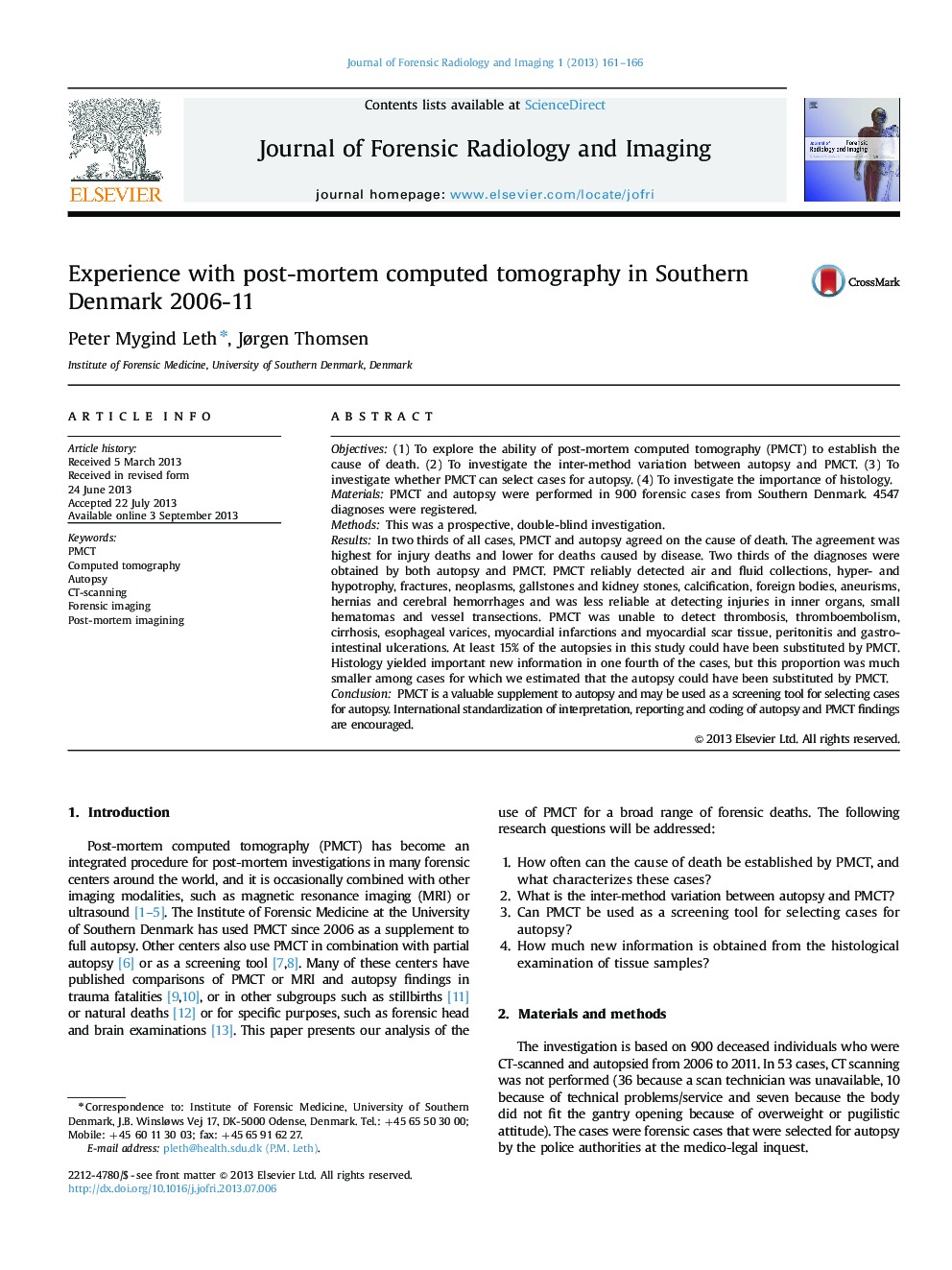| Article ID | Journal | Published Year | Pages | File Type |
|---|---|---|---|---|
| 103300 | Journal of Forensic Radiology and Imaging | 2013 | 6 Pages |
Objectives(1) To explore the ability of post-mortem computed tomography (PMCT) to establish the cause of death. (2) To investigate the inter-method variation between autopsy and PMCT. (3) To investigate whether PMCT can select cases for autopsy. (4) To investigate the importance of histology.MaterialsPMCT and autopsy were performed in 900 forensic cases from Southern Denmark. 4547 diagnoses were registered.MethodsThis was a prospective, double-blind investigation.ResultsIn two thirds of all cases, PMCT and autopsy agreed on the cause of death. The agreement was highest for injury deaths and lower for deaths caused by disease. Two thirds of the diagnoses were obtained by both autopsy and PMCT. PMCT reliably detected air and fluid collections, hyper- and hypotrophy, fractures, neoplasms, gallstones and kidney stones, calcification, foreign bodies, aneurisms, hernias and cerebral hemorrhages and was less reliable at detecting injuries in inner organs, small hematomas and vessel transections. PMCT was unable to detect thrombosis, thromboembolism, cirrhosis, esophageal varices, myocardial infarctions and myocardial scar tissue, peritonitis and gastrointestinal ulcerations. At least 15% of the autopsies in this study could have been substituted by PMCT. Histology yielded important new information in one fourth of the cases, but this proportion was much smaller among cases for which we estimated that the autopsy could have been substituted by PMCT.ConclusionPMCT is a valuable supplement to autopsy and may be used as a screening tool for selecting cases for autopsy. International standardization of interpretation, reporting and coding of autopsy and PMCT findings are encouraged.
